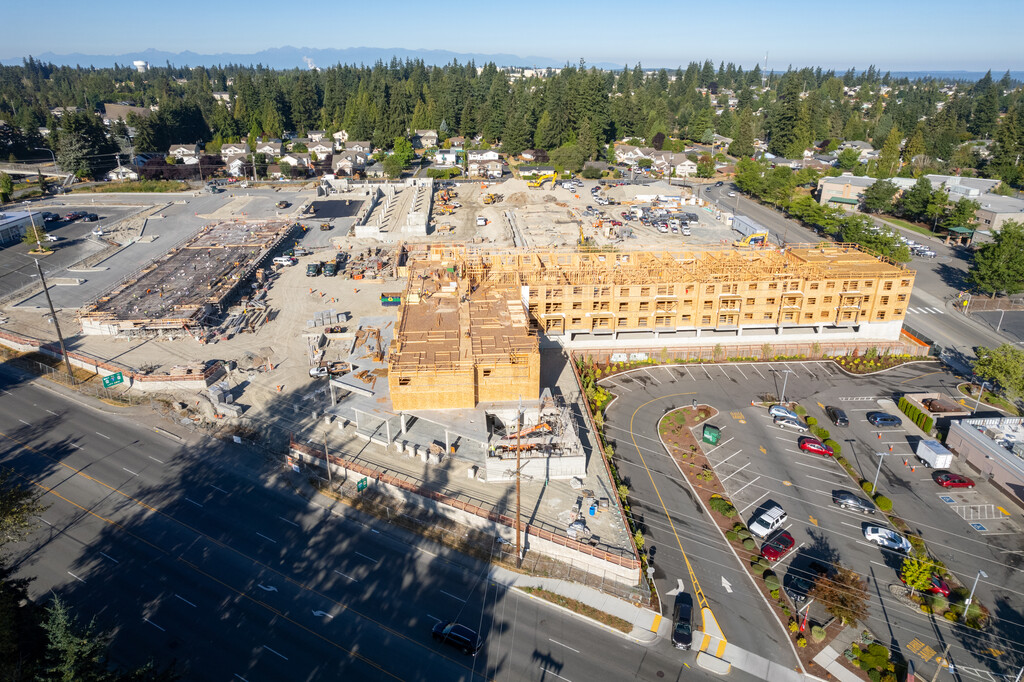The Growth Management Act (GMA) requires local governments to “plan for and accommodate” housing affordable to all income levels. This page provides guidance and information about programs to assist local governments in planning for their future housing needs.
Programs
Project information on EZView
Many housing programs have ongoing project updates and details that are shared on our EZView webpages.
Resources
Here are the most recent laws affecting how we plan for housing and a link to the current rulemaking page:
The Housing Market Data Toolkit (Washington Center for Real Estate Research at University of Washington webpage) provides data for all cities over 10,000 population, and for all counties in the state. This data can be used as a source of information during the preparation of housing needs assessments and housing elements.
Affordable Housing Advisory Board Plan
The Affordable Housing Advisory Board (AHAB) published the 2023-2028 Affordable Housing Advisory Plan (PDF), a 5-year progress report towards meeting statewide affordable housing needs.
The plan documents the need for affordable housing in the state and the extent to which that need is being met through public and private sector programs, including a dashboard showing the progress each county is making towards meeting affordable housing needs.
Housing Memo
Commerce’s 2019 Housing Memo: Issues Affecting Housing Availability and Affordability (PDF) addresses barriers to housing production and affordability in Washington.
Housing Survey
Housing and homelessness were the top two issues that Washington residents named in a 12-county survey conducted by Commerce and the Puget Sound Regional Council in late 2022. The majority of respondents in every county wanted to see more diverse housing and more affordability, including some types of multi-unit housing in single-family zones.
You can read the full housing survey report (PDF) here.
Communication Tools
Commerce created these communications tools – which include videos, fact sheets and power point presentations – for use by Washington state jurisdictions and other housing stakeholders to share, download and edit as needed for use in your community. They are available in Chinese, Spanish, and English, and address a variety of issues relating to planning for housing including homelessness, racially disparate impacts, and environmental considerations.
Housing Videos
- We Need More Housing
- Housing Washingtonians
- Planning for the Homeless and Lowest Income Bracket
- Middle Housing & Accessory Dwellings in Washington State
- Racially Disparate Impacts
- Quality of Life and Environment
Videos (Chinese)
- We Need More Housing – 简体中文 (ZHS)
- Housing Washingtonians – 简体中文 (ZHS)
- Planning for the Homeless and Lowest Income Bracket – 简体中文 (ZHS)
- Middle Housing & Accessory Dwellings in Washington State – 简体中文 (ZHS)
- Racially Disparate Impacts – 简体中文 (ZHS)
- Quality of Life and Environment – 简体中文 (ZHS)
Videos (Spanish)
- We Need More Housing – Español (ES)
- Housing Washingtonians – Español (ES)
- Planning for the Homeless and Lowest Income Bracket – Español (ES)
- Middle Housing & Accessory Dwellings in Washington State – Español (ES)
- Racially Disparate Impacts – Español (ES)
- Quality of Life and Environment – Español (ES)
PowerPoints
- Housing in Washington (PPT)
- Housing Washingtonians (PPT)
- Planning for the Homeless and Lowest Income Households (PPT)
- Accessory Dwellings (PPT)
- Racially Disparate Impacts (PPT)
- Quality of Life and Environment (PPT)
PowerPoints (Chinese)
- Housing in Washington (PPT) – 简体中文 (ZHS)
- Housing Washingtonians (PPT) – 简体中文 (ZHS)
- Planning for the Homeless and Lowest Income Households (PPT) – 简体中文 (ZHS)
- Accessory Dwellings (PPT) – 简体中文 (ZHS)
- Racially Disparate Impacts (PPT) – 简体中文 (ZHS)
- Quality of Life and Environment (PPT) – 简体中文 (ZHS)
PowerPoints (Spansih)
- Housing in Washington (PPT) – Español (ES)
- Housing Washingtonians (PPT) – Español (ES)
- Planning for the Homeless and Lowest Income Households (PPT) – Español (ES)
- Accessory Dwellings (PPT) – Español (ES)
- Racially Disparate Impacts (PPT) – Español (ES)
- Quality of Life and Environment (PPT) – Español (ES)
Facts Sheets
- Housing in Washington (Word)
- Housing Washingtonians (Word)
- Planning for the Homeless and Lowest Income (Word)
- Accessory Dwellings (Word)
- Racially Disparate Impacts (Word)
- Quality, life and Environment (Word)
Fact Sheets (Chinese)
- Housing in Washington (Word) – 简体中文 (ZHS)
- Housing Washingtonians (Word) – 简体中文 (ZHS)
- Planning for the Homeless and Lowest Income (Word) – 简体中文 (ZHS)
- Accessory Dwellings (Word) – 简体中文 (ZHS)
- Racially Disparate Impacts (Word) – 简体中文 (ZHS)
- Quality, life and Environment (Word) – 简体中文 (ZHS)









